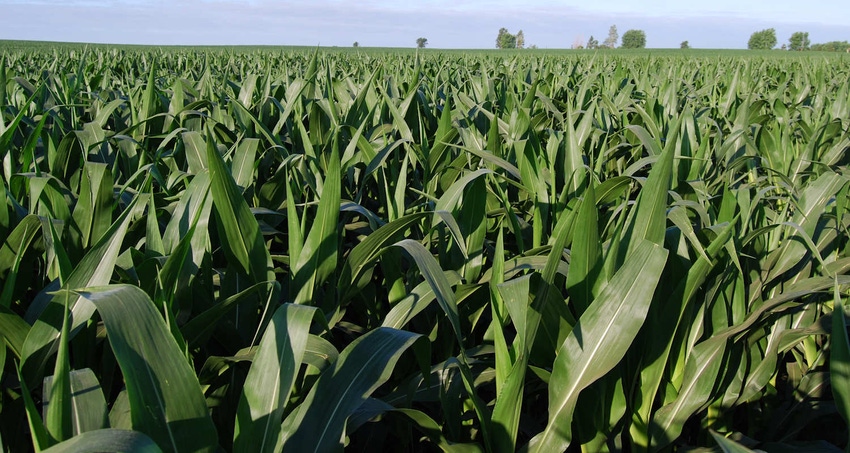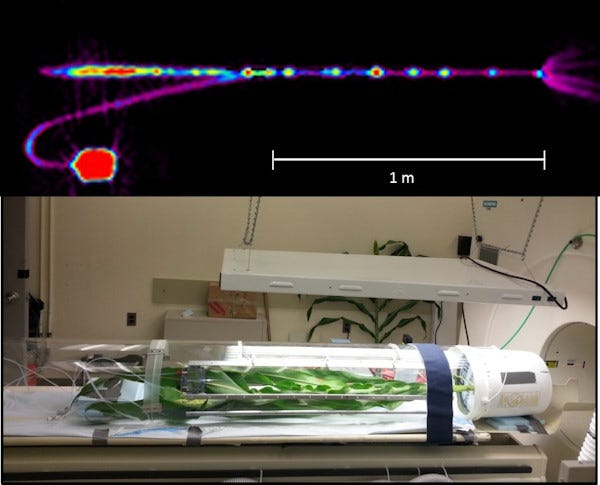December 28, 2016

The corn plant is a big, complicated food producer. And even though farmers have been raising corn in some form for more than 9,000 years, researchers are still learning more about how this plant works. Case in point is a new report from the University of Missouri showing that researchers are turning to nuclear medicine tools to better understand the innards of the corn plant.
Their work is targeted at the western corn rootworm, and they've found the mechanisms corn plants use to combat the pest. The research team's goal is to find ways to better breed corn that resist a pest whose favorite food source is the growing roots of a corn plant. Missouri researchers working along with the Uniersity of Bern, Switzerland, Brookhaven National Laboratory in New York and with USDA turned to radioisotopes to trace the movement of essential nutrients and hormones through the corn plant.
The key is to find ways that natural resistance using the corn plant's built-in systems as a tool. In its work the team injected radioisotope tracers in healthy and rootworm-infested corn plants. In their work the researcher looked at auxin, which is a powerful plant hormone which is involved in stimulating new root growth. Said Richard Ferrieri, research professor, MU Interdisciplinary Plant Group: "Our target was to follow auxin’s biosynthesis and movement in both healthy and stressed plants and determine how it contributes to this process."
They tagged auxin with a radioactive tracer, then used a medical diagnostic imaging tool called positron emission tomography to monitor movement of auxin in living plant roots in real time. The PET imaging system can "see" those isotopes and show movement. The researchers also attached a radioactive tracer to an amino acid called glutamine important to controlling auxin chemistry.

By tagging auxin with a radioactive tracer, the researchers were able to use a medical diagnostic imaging tool call positron emission tomography, or PET imaging, to “watch” the movement of auxin in living plant roots in real time. Credit: Richard Ferrieri
The key was to observe the pathways corn plants used to transport glutamine, and how that influenced auxin. What they found is that auxin is tightly regulated at the root tissue level where rootworms feed. The study also found that auxin biosynthesis is key to root regrowth and involves specific biochemical pathways that are influenced by the rootworm and triggered by glutamine metabolism.
It sounds a little complicated, but this ability to dig into plant systems to better understand specific processes has more value now than ever before. Just 10 years ago this very news would have been helpful, but plant breeders and geneticists wouldn't have a lot of ways to make a difference. But as plant breeding becomes more precise, with enhanced data analysis as well as new biotech breeding tools, this knowledge can be put to use sooner.
Ferrieri noted that the research will point plant breeders to specific areas including glutamine utilization, which can help them engineer plants that can resist the impact of rootworm. Targeted plant breeding, thanks to better views of the secret life of plant systems, will offer farmers enhanced plant performance. Add in the biotech traits available now and the long-term yield potential continues to grow.
This work in Missouri is a fascinating example of how a medical system - radioisotopes in circulation - used for humans can be put to work in plants. Plant breeders know there's some inherent resistance to many pests your crops face, the trick is figuring out just how different systems work, then determining how best to put that to work.
This University of Missouri work blazes a new trail for plant breeders and offers interesting potential for the future. If you want to dig in further, you can check out the original report just published in Plant Physiology.
About the Author(s)
You May Also Like






